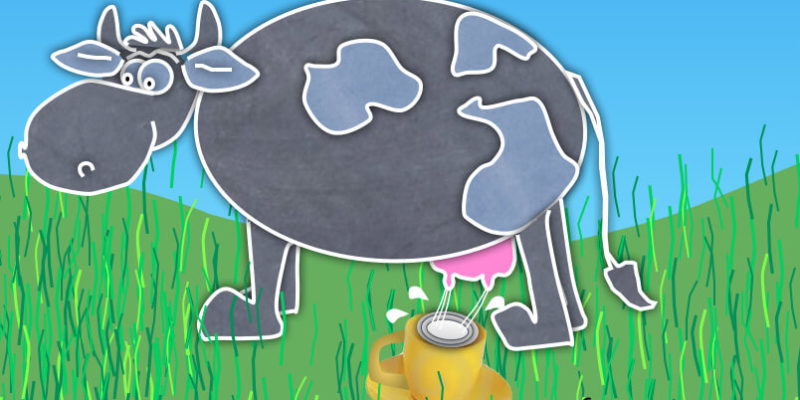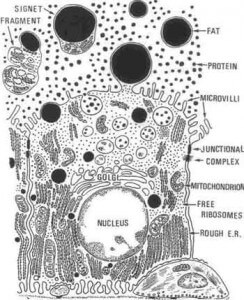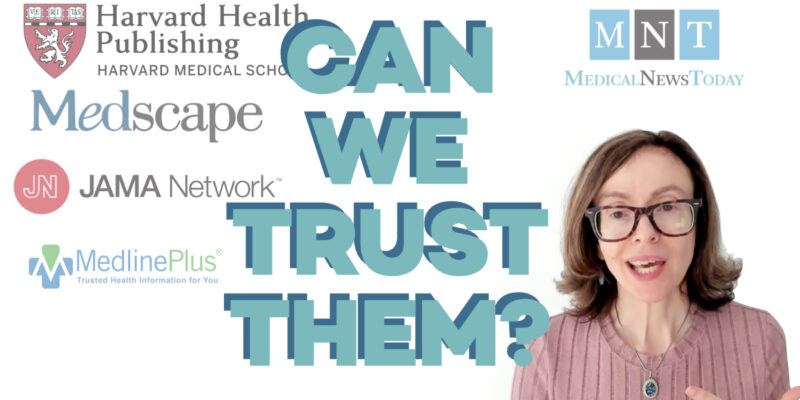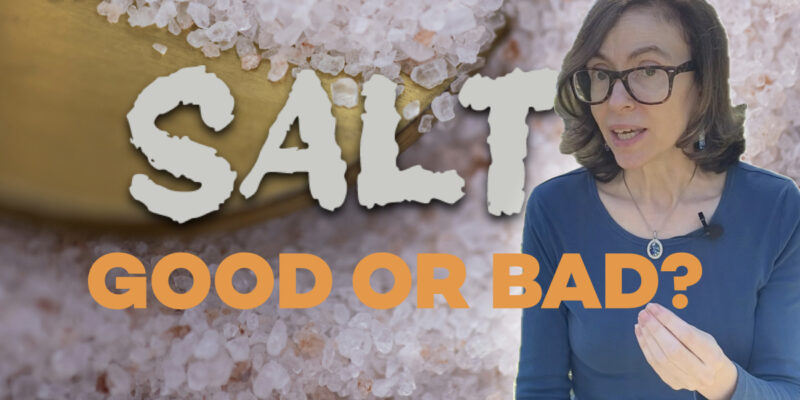If you're a health professional you should know that you can't implicitly trust medical news outlets. They may be manipulating you!

Raw Milk-Why Mess With Udder Perfection?
This article is Cross Posted on The Jew and the Carrot
Milk may be the single most historically important food to human health. Not just any milk, mind you, but raw milk from healthy, free-to-roam, grass-fed cows. The difference between the milk you buy in the store, and the milk your great-great grandparents enjoyed is, unfortunately, enormous. If we lived in a country where raw milk from healthy, pastured cows were still a legal product and available as readily as, say, soda or a handgun, we’d all be taller and healthier, and I’d see fewer elderly patients with hunched backs and broken hips. If you’re lucky enough to live in a state where raw milk is available in stores and you don’t buy it, you are passing up a huge opportunity to improve your health immediately. If you have kids, raw milk will not only help them grow, but will also boost their immune systems so they get sick less often. And, since the cream in raw milk is an important source of brain-building fats, whole milk and other raw dairy products will also help them to learn.
It’s a common misperception that milk drinking is a relatively new practice, one limited to Europeans. The reality is that our cultural—and now, our epigenetic—dependence on milk most likely originated somewhere in Africa.
This article is continued below...(scroll down)
It is highly likely that milk consumption gave those who practiced animal husbandry such an advantage that it rapidly spread across the continent and then into Europe and Asia. With such widespread use, it’s likely that to allow for optimal expression, many of our genes now require it. In those countries where people’s stature most benefited from the consumption of raw milk, when raw milk is replaced with a processed alternative, their bones take the hardest hit. It’s a case of the bigger they are the harder they fall. In places like Norway, Sweden, and Denmark, people now suffer from particularly high rates of osteoporosis and degenerative arthritis.[i]
Our genes have been infused with real dairy products for tens of thousands of years. Recent geologic and climatologic research reveals that between 100,000 and 10,000 years ago, the Sahara was a lush paradise of grassland. During that window of abundance, the human population exploded. To deal with the consequential depletion of wild resources, people began experiments in “proto-farming,” a term coined by biologist and historian Colin Tudge to describe humanity’s slow-motion leap from living in harmony with the land as hunter-gatherers to adopting the now-familiar program of altering the ecology to suit our interests. Author Thom Hartmann explains in his book The Last Hours of Ancient Sunlight:
Something important happened around 40,000 years ago: humans figured out a way to change the patterns of nature so we could get more sunlight/food than other species did. The human food supply was determined by how many deer or rabbits the local forest could support […]. But in areas where the soil was too poor for farming or forest, supporting only scrub brush and grasses, humans discovered that ruminant (grazing animals like goats, sheep, and cows) could eat those plants that we couldn’t, and could therefore convert the daily sunlight captured by the scrub and wild plants on that “useless” land into animal flesh, which we could eat.
Or drink, as the case may be.
For millennia, much of the world’s population has depended largely on milk for nutritional sustenance. However, the medical world has been ignorant of milk’s nearly ubiquitous use, confused by the issue of lactose intolerance. Because Europeans have lower rates of lactose intolerance, most Western physicians presume that only European populations have historically practiced dairying. But this confusion arises in part because most Western physicians don’t know very much about fermentation.
Lactose Intolerance
Lactose is the major type of sugar in milk. Nearly everyone can digest it while we’re babies and dependent on our mother’s milk, but many people lose the lactase enzyme in the lining of the intestine, growing lactose intolerant as they get older. Fermentation breaks down lactose, and so you don’t need that enzyme as long as you only eat fermented dairy products, such as yoghurt and cheese.
The reason people living in warmer climates tend to be lactose intolerant more often than Europeans stems from the fact that fermentation progresses rapidly in warmer climates. Once fermented, the potentially irritating lactose sugars are gone. A child living in a warmer climate would, after weaning, have such infrequent need for the lactase enzyme that the epigenetic librarian would simply switch the gene off. In cooler European climates, fresh milk stays fresh for hours or days, and was presumably consumed that way often enough to keep the lactase enzyme epigenetically activated throughout a person’s life. If you have true lactose intolerance, as opposed to a protein allergy, you should be able to tolerate yoghurt, cheese, and cream (dairy fat contains little to no lactose—and minimal protein).
Why Most Milk is Pasteurized Today
Most of us also have heard that milk needs to be pasteurized to be safe. But we haven’t heard the whole story. For perhaps thousands of years, people who gave their animals the basic, humane care they deserved survived and thrived drinking completely raw, fresh milk. The need for pasteurization was a reality when in-city dairies housed diseased cows whose hindquarters ran with rivulets of manure. Tainting milk’s reputation even further, around the same time, dairymen were often infected with diphtheria, spreading the deadly bacteria through the medium of warm, protein-rich milk. But no epidemics have ever been traced to raw milk consumption when the cows were healthy and the humans milking them were disease free.[ii] If the animal is sickly—as they invariably are when raise in crowded, nightmarish conditions—its milk should probably not be consumed at all. When that’s your only choice, then, yes it ought to be cooked first to reduce risk of potentially lethal infections including undulant fever, hemolytic uremia, sepsis, and more. But it’s not your only choice.
If you erase any ethical entanglement, impulse of social responsibility, nagging moral prohibition, and investment in human health, you could call milk pasteurization a good thing. In terms of volume of product output per production unit, pasteurization plays a crucial role in converting small family farms into perfectly efficient milk producers for the national brands: cheaper feed (silage and grain instead of fresh grass and hay), more cows per square foot, more “milk” per cow. That explains why big agribusiness roots for pasteurization. But how did the rest of us get convinced?
Our fear of fresh milk can be traced to the energetic campaigning of a man named Charles North who patented the first batch-processing pasteurization machine in 1907.[iii] A skilled orator and savvy businessman, he traveled small towns throughout the country creating publicity and interest in his machines by claiming to have come directly from another small town, just like theirs, where people were dying from drinking unpasteurized milk.[iv] Of course, his claims were total fiction and doctors were staunchly opposed to pasteurization.[v] The facts were on their side. Unfortunately, North had something better—fear. And he milked that fear right into a small fortune. The pasteurization industry mushroomed from nonexistence to a major political presence. Today, at the University of Pennsylvania where medical professors once protested that pasteurization “should never be had recourse to,”[vi] medical students are given lessons on the many health benefits of pasteurization.
Whenever I have a patient who was raised on a farm, one who looks tough and boasts how rarely they get sick, I ask them if they drank raw milk as a child. Nine times out of ten, they say yes. Every family dairyman I’ve talked to keeps raw milk around for their own families and happily testifies to its health benefits. Unlike meat or fruit or really any other food, milk is unique in that its one and only purpose is to nourish something else. Not only is it loaded with nutrients, it is engineered with an intricate micro-architecture that is key to enhancing digestive function while preventing the nourishing compounds from reacting with one another. Processing fundamentally alters this micro-architecture and diminishes nutritive value significantly. How much of a difference does this make? Enough that, based on their health and bone structure, I can guess with a high degree of accuracy which of my patients had access to raw milk as a child and which did not.
Since 1948, when states began passing mandatory pasteurization laws, raw milk fans have waged a bitter battle against government intervention. During hearings in which laws requiring pasteurization have been challenged, pasteurization proponents deny any nutritional difference between pasteurized, homogenized milk and raw. But as dairy scientists point out, heat denatures proteins, and homogenization explodes the fat droplets in milk. This is significant. Even to the naked eye, there’s a difference: Unlike cooked milk, the fresh product has a layer of cream floating at the top. But to fully understand how these two products differ, we need to bust out the microscope.

The Difference Between Fresh and Processed
If we put a drop of fresh milk on a slide, we see thousands of lipid droplets of varying size streaming under the cover slip and maybe a living lactobacilli or two wiggling from edge to edge. These come from the cow’s udders which, when well cared for, are colonized with beneficial bacteria, as is human skin. We want good bacteria in our milk. These probiotics protect both the milk and the milk consumer from pathogens. Good bacteria accomplish this by using the same bacterial communication techniques we read about in the section on fermentation.
Using the powerful electron microscope, we can magnify milk 10,000,000 times. Now we can see casein micelles, which are amazingly complex. Imagine a mound of spaghetti and meatballs formed into a big round ball. The strands of spaghetti are made of protein (casein), and the meatballs are made of the most digestible form of calcium phosphate, called colloidal calcium phosphate, which holds the spaghetti strands together in a clump with its tiny magnetic charge. This clumping prevents sugar from reacting with and destroying milk’s essential amino acids.
Each tiny globe of fat in the milk is enclosed inside a phospholipid membrane very similar to the membrane surrounding every cell in your body. The mammary gland cell that produced the fat droplet donated some of its membrane when the droplet exited the cell. This coating performs several tasks, starting in the milk duct where it prevents fat droplets from coalescing and clogging up mom’s mammary passageways. The milk fat globule’s lipid bilayer is studded with a variety of specialized proteins, just like the living cells in your body. Some proteins protect the globule from bacterial infection while others are tagged with short chains of sugars that may function as a signal to the intestinal cell that the contents are to be accepted without immune inspection, streamlining digestion. Still others may act as intestinal cell growth factors, encouraging and directing intestinal cells growth and function. As long as the coating surrounds the milk fat globule, the fat is easily digested, the gallbladder doesn’t have to squeeze out any bile for the fat to be absorbed, the fatty acids inside the blob are isolated from the calcium in the casein micelles, and everything goes smoothly. But if calcium and fats come into contact with one another, as we’ll see in a moment, milk loses much of its capacity to deliver nutrients into your body.
Let’s go back to the light microscope to take a look at pasteurized, homogenized milk and identify what distinguishes it from raw. One striking difference will be the homogeneity of fat globule sizes and the absence of living bacteria. But the real damage is hiding behind all this homogeneity and is only revealed under the electron microscope. Now, we see that these fat blobs lack the sophisticated bilayer wrapping and are instead caked with minerals and tangled remnants of casein micelles. Why does it look like this? The heat of pasteurization forces the sugar to react with amino acids, denaturing the proteins and knocking the fragile colloidal calcium phosphate out of the spaghetti-and-meatballs matrix, while the denatured spaghetti strands tangle into a tight, hard knot. Homogenization squeezes the milk through tiny holes under intense pressure, destroying the architecture of the fat globules. Once the two processing steps have destroyed the natural architecture of milk, valuable nutrients react with each other with health-damaging consequences.

Processing can render milk highly irritating to the intestinal tract, and such a wide variety of chemical changes may occur that processed milk can lead to diarrhea or constipation. During processing, the nice, soft meatball of colloidal calcium phosphate fuses with the fatty acids to form a kind of milk-fat soap. This reaction, called saponification, irritates many people’s GI tracts and makes the calcium and phosphate much less bioavailable and more difficult to absorb.[vii] How difficult? Food conglomerates have a lot of influence on the direction of research funding. And the dairy industry is big business. Little wonder that no studies have been funded to compare the nutritional value raw, whole cow’s milk to pasteurized head-to-head. But studies have been done on skim milk and human breast milk comparing fresh versus pasteurized, and the difference is dramatic: Processed milks contained anywhere from one half to one sixth the bioavailable minerals of the fresh products.[viii],[ix] When fresh, the milk fat globule carries signal molecules on the surface, which help your body recognize milk as a helpful substance as opposed to, say, an invasive bacteria. Processing demolishes those handy signals and so, instead of getting a free pass into the intestinal cell, the curiously distorted signals slow the process of digestion down so much that it can lead to constipation.[x] Heat destroys amino acids, especially the fragile essential amino acids, and so pasteurized milk contains less protein than fresh.[xi] But the damaged amino acids don’t just disappear; they have been glycated, oxidized and transformed into stuff like N-carboxymethyl-lysine, malonaldehyde, and 4-hydroxynonanal—potentential allergens and pro-inflammatory irritants.[xii]
And there’s more. Many of the active enzymes in fresh milk designed to help streamline the digestive process have also been destroyed. Other enzymes, such as xanthine oxidase, which ordinarily protect the milk (but cause damage inside our arteries) can play stowaway within the artificially formed fat blobs and be absorbed. Normally our digestive system would chop up this enzyme and digest it. But hidden inside fat, it can be ingested whole, and may retain some of its original activity. Once in the body, xanthine oxidase can generate free radicals and lead to atherosclerosis and asthma. One more thing that makes raw milk special is the surface molecules on milk fat globule membranes, called gangliosides. Gangliosides inhibit harmful bacteria in the intestine. Once digested, they’ve been shown to stimulate neural development.[xiii] Homogenization strips these benefits away.
What does all this scientific data mean to you? It means that the processed milk you buy in the store is not milk, not really. If you can’t find a good source of fresh, unprocessed milk, what can you do? Get the next best thing: yoghurt made from organic, whole milk. The fermentation process rejuvenates damaged proteins and makes minerals more bioavailable. A breakfast of yoghurt, fresh fruit slices, and nuts is nutritionally far superior to cold cereal and processed milk. But if you aren’t ready to give up milk for breakfast, then get organic whole milk (not low fat), preferably from cows raised on pasture—not grain! Non-organic dairy may seem cheaper, but in reality you get far less nutrition for the dollar than you do with organic because at least organically raised cows produce milk. The stuff that comes out of malnourished cows living in cement milk-factories hardly qualifies as such. Whatever you do, avoid soymilk. The primary difference between Yoohoo, a junk-food beverage snack sold in your local 7-11 and the soymilk sold in the health food stores is that Yoohoo is flavored with chocolate.
Splendor in the Grass: Anti-Cancer CLA
Source matters. The anti-cancer properties of a fatty acid called CLA (conjugated linolenic acid) are extremely potent. In a new clinical trial investigating the ability of CLA to reverse cancer in women undergoing biopsies, Dartmouth-Hitchock investigators use a single, approximately 800 mg dose and believe regressions will be visible in ten days. Ruminant animals’ (goats, sheep, cows, camel, etc.) milk and meat offer us the only natural source of CLA. But not all that ruminates fits the bill.
Milk from cows feeding on freshly growing grass contains more than 500 percent the CLA of milk from cows fed grain.[xiii] To give you an idea of the difference, 2-3 Tbs of grass fed butter (200-300 calories) are equivalent to the 800 mg being studied to reverse cancerous growths at Dartmouth-Hitchocock, but it would take 10-15 Tbs of grain-fed butter (1000-1500 calories) to get the same dose of CLA. (If you aren’t into dairy, then gently cook one untrimmed NY strip steak, or bone-marrow medallion, or other fat-rich bit of bovinious bliss from an animal that’s been properly pastured.)
The best time of year to introduce yourself to raw milk varies depending on your local climate. You want the animals to be eating fresh, growing grass because that’s their natural food and they will be healthier. Best of all, the milk will taste delicious and the cream to die for. (I add extra cream to my milk and it’s as good as ice cream.)
Safety First!
Still, you can’t just drink raw milk from anywhere. You really really need to do your homework. Tainted milk can contain pathogens such as brucella, listeria, and invasive E. coli. Raw milk must come from a trusted source, from a dairy committed to cleanliness, protocol, and animal welfare.
How do you identify a trustworthy source of fresh dairy? What I have to do, as with all animal products, is get in my car and drive. I go to local butcher shops, farmers markets, and farms, and meet the people who make my dinners possible. When I find a rancher or farmer who talks about caring for animals in ways that make me think he or she actually gives a damn, I know I’ve found someone who deserves my money.
Excerpts from Dr. Shanahan’s book Deep Nutrition: Why Your Genes Need Traditional Food
and from Food Rules: A Doctor’s Guide to Healthy Eating
Copyright 2008, 2010, Catherine Shanahan, MD and Luke Shanahan, MFA
[i] The apparent incidence of hip fracture in Europe: A study of national register sources. Johnel O, Ostoporosis International, Volume 2, Number 6 / November, 1992
[ii] The Milk Book: The Milk of Human Kindness is Not Pasteurized. William Campbell Douglass II, MD. Rhino Publishing 2005.
[iii] Continuous Thermal Processing of Foods: Pasteurization and Uht. Heppell NJ. Springer 2000 P194
[iv] Dr. North and the Kansas City Newspaper War: Public Health Advocacy Collides with Main Street Respectability. Kovarik B. Paper presented at the Annual Meeting of the Association for Education in Journalism and Mass Communication (72nd, Washington, DC, August 10-13, 1989) accessed online dec 27, 2007 at www.radford.edu/wkovarik/papers/aej98.html
[v] The Milk Book: The Milk of Human Kindness is Not Pasteurized. William Campbell Douglass II, MD. Rhino Publishing 2005.
[vi] The Milk Book: The Milk of Human Kindness is Not Pasteurized. William Campbell Douglass II, MD. Rhino Publishing 2005. p11.
[vii] Modificiations in milk proteins induced by heat treatment and homogenization and their influence on susceptibility to proteolysis. Garcia-Risco MR. International Dairy Journal 12 (2002) 679-688.
[viii] Soluble, dialyzable and ionic calcium in raw and processed skim milk, whole milk and spinach. Reykdal O. Journal of Food Science 56 3, pp. 864–866. 1991
[ix] Calcium bioavailability in human milk, cow milk and infant formulas—comparison between dialysis and solubility methods Roig MJ. Food Chemistry Vol 65, Issue 3, P353-357.
[x] Carbonylation of milk powder proteins as a consequence of processing conditions François Fenaille. Proteomics Vol 5 Issue 12 pp3097-3104
[xi] Modificiations in milk proteins induced by heat treatment and homogenization and their influence on susceptibility to proteolysis. Garcia-Risco MR. International Dairy Journal 12 (2002) 679-688.
[xii] Chemistry And Safety of Acrylamide In Food, Friedman M. p141. Springer 2005
[xiii] Dietary Fat Requirements in Health and Development, Thomas H Applewhite, American Oil Chemists Society 1988 p30
[xiv] Conjugated linoleic acid content of milk from cows fed different diets, J Dairy Sci. 1999 Oct;82(10):2146-56.
Please note: Please do not share personal medical information in a comment on our posts. It will be deleted due to HIPAA regulations.
This Post Has 41 Comments
Comments are closed.
Note: Please do not share personal information with a medical question in our comment section. Comments containing this content will be deleted due to HIPAA regulations.





















Dr Cate, does raw whole milk cause an insulin spike? I am eating a high fat low carb diet in order to be more insulin sensitive. I am lucky enough to be able to acquire raw milk from grass fed cows, but I do not know if raw milk causes a release of insulin. Please let me know, I would greatly appreciate any feedback.
Dr. Cate:
I have been drinking about a gallon of raw milk a week for over a year now. Is that a reasonable amount to consume?
Thanks,
Gerry
I have been drinking raw milk from a state approved dairy for the last 6 months. I originally was hesitant to let my kids try it, but seeing as I was doing so well, I thought it would be fine. Two of my kids seemed to have tolerated it fine, but my teenage daughter had some diarrhea and fever within a couple of days. She also has acne (and therefore gut issues, IMO.) This scared me away from letting any of my kids have any more, and I switched them to organic grass-fed pasteurized milk. I still think from time to time it would be good to build their immunity with the raw milk, but it gives me such anxiety thinking about it, I always chicken out. We do fermented veggies from time to time for gut health and immunity. Is raw milk important enough to revisit? Am I being paranoid?
Hello Cate,
I had the (serendipitous) pleasure of meeting your husband at the film festival yesterday. How fortunate we got to talking about my dog’s knee supplement! He generously gave me a copy of Food Rules and I’ve just finished devouring it. What a treat!
I will email him a thank you next, but felt compelled to thank you directly as I fished around your website just now. (Sorry, the food references just keep coming…). I’m so curious to read the many other articles that relate to me.
Thank you for taking the time to share your insight here and in your books, and in such an easy to ingest format. I’m confident that small, yet significant, changes (as I already abide by most of the rules) will lead to a permanent reduction in 12+ years of chronic back pain.
Thank you, thank you.
Melody
I have recently bought Deep Nutrition and am enjoying it. I live in Long Island, NY and unfortunately do not have access to raw milk. You said the next best thing is whole, organic milk but most of it is ultra-pasturized…is this still ok? I am trying to find what’s best for my kids as my son is short for his age and I have been giving him the organic whole milk to drink. Also I will be buying a yogurt maker soon..what’s your opinion of them? Thanks!
Ultrapasteurized organic whole milk, preferably Organic Valley (b/c they are more likely to be grass fed than Horizon) is better than fake milks by far. Yoghurts made from this milk, either by you or in larger batches available in stores, would be better than the milk because the bacterial fermentation does regenerate some nutrients. When we were in HI, I bought Stoneyfield (they are organic) whole milk yoghurt b/c I was too busy to make my own and when possible (seasonally) the cows are often on pasture.
Thanks..this is good to know because I love yogurt. Btw, when is your cookbook coming out?
We’re testing out recipes daily but not sure on a publication date just yet. We are working on time saving tricks based on traditional methods. Stay tuned!
Dr. Cate, would you recommend cream from grass fed cows which is only pasteurized to the minimum requirements as a good dietary addition, or are the nutrients still too damaged? What about Kefir made from pasteurized milk as a source of probiotics if one does not like cultured vegetables? Finally, is organic pasteurized goats milk/cheese okay as at least it isn’t homogenized?
To figure this sort of stuff out, the principles of source and tradition are our best allies. (It seems like you’ve already got that idea because all your guesses aim in the right direction.) If you’ve got a good source for dairy, then try to keep the product as traditional as possible. Therefore, gently pasteurized cream is better than not-so gently pasteurized. Kefir is fermented, and fermentation is a traditional process that greatly enhances the nutritional value. And dairy that avoid homogenization is better than dairy that doesn’t, given equally healthy sources.
For patients with Irritable Bowel Syndrome, do you recommend kefir made with raw milk instead of raw milk? Also, is raw milk ok for women with PCOS?
I would only make the recommendation for Kefir over raw milk if there were symptoms induced by raw milk. PCOS is a result of carb overconsumption and the resulting metabolic dysregulation, not from hormones in dairy.
Dr. Cate — Does the exceptional digestibility of raw milk have any effect on its “effective carb count” in a low-carb diet?
In his book “The Untold Story of Milk”, Dr. Ron Schmid describes the “raw milk cure” used at the Mayo Clinic in the early 20th century for various diseases, in which prodigious quantities of raw milk were given to patients. Quoting a Dr. Crewe from a 1929 article, “One patient reduced from 325 pounds to 284 in two weeks, on four quarts of milk a day…”. Dr. Schmid gives other such examples in a non-clinical setting, including a 140 lb man who lived entirely on 3 quarts of milk a day and maintained his weight for life.
At 11.4 gm carbs/cup and 32 cup/qt, four quarts a day comes out to about 1460 grams of carbs per day (and at 146 cal/cup, 18,700 calories!) This doesn’t sit well with either the low-calorie or the low-carb paradigms for weight loss, which would say that daily intake of (say) 50 gm carbs or 1800 calories would be a rough upper limit for weight loss.
I’d love to hear your take on this. On a low-calorie theory, I don’t see any way to make the facts fit. On a low-carb theory, perhaps the unique digestive pathway of raw milk means the carbs don’t spike insulin and so don’t drive lipogenesis?
I hope you see this and feel moved to respond, but in any case, thanks for your great work.
JIm
It’s hard to know how to interpret these short, anecdotal claims. The gentleman drinking 4 qts of milk per day may have had some unusual digestive disorder, for example a malabsorption due to pancreatic disfunction, so that his experience would not generalize. However there is certainly a possibility that, in some individual’s GI tracts, some or all of the carb (or other nutrient) in milk will not get ingested into the body and would be instead utilized by gut bacteria which will in turn produce more complex nutrients (ie vitamins) that do get absorbed into the blood.
32 cups/quart? Wouldn’t 4 cups/quart be more like it? Total calories would then be more like 2300 or so per day.
Thanks for pointing this out, Irene.
The bottom line is anecdotal reports are not always the best resources to guide dietary decisions because as we’ve just seen important facts can get miscommunicated. So the carb consumption per day from drinking 4qt or 1 gal milk is approximately 320 gm carb. Still more than I’d advise. Again, even if this anecdote is accurate the reasons for this individual’s success may be unique to his epigenetics and metabolism.
I’m fortunate to live in a part of Pennsylvania where you can find raw milk (from pastured cows) without too much trouble. (And have pastured beef, pork, and poultry available as well!) This is just n=1, but I’ve had raw milk for years now and never gotten sick. Qualitatively, the milk simply tastes better. Industrial milk (even organic) just tastes watery to me.
As to the calcium/osteoperosis correlation, I wonder if there have been studies that further looked at K2 in the diet to facilitate absorption of the calcium. Also, I thought I’d read that pastuerization and homogenization negatively affect bio-availability of calcium, so the amount of milk consumed (if industrial) might not be a particularly useful statistic.
I read your book and started buying pasturized whole organic milk for my seven year old son. I can’t find raw milk locally. He greatly prefers 2% milk and it’s available here also organic. What is the benifit of whole milk vs. 2%? I couldn’t find the reason you suggested WHOLE organic (and not 2%) if raw milk was not available. His school only offers 2% non-organic as well, but he seems to have developed a taste for it over whole milk.
The benefit of whole milk is that it may contain a higher concentration of essential fatty acids. Note the qualifier “may”
Here’s the scoop.
2% refers to the percentage of fatty acids. Whole, organic milk contains a little more butterfat/cream, I think the lower limit is 3 or 3.5% as opposed to 2% with 2% milk. The fatty acids are going to include conjugated linoleic acids as well as omega-3 fatty acids, and there will be a relatively higher percentage of these essential fatty acids when the cows ate grass (as opposed to grain). The type of feed is a different issue than whether or not the milk is organic, so both grass fed and organic are important for different reasons. When the milk is organic, as opposed to conventional, you don’t get the toxins that concentrate in the fat. When the cows were grass fed, even if not organic, they will have more of the essential fatty acids. Pasteurization and homogenization destroy these nutrients, along with several others.
Finally some research on the benefits of raw milk.
Looking at the bigger picture, I suspect its not so much that raw milk is protective, it’s that drinking pasteurized milk is potentially harmful. Why? Simply because any time you heat/process protein you risk creating allergens. And casein is a protein that is used in so many processed foods!
Also, with a strange conclusion like that, strange in that it is anti-whole food — it appears the underlying drive of the study is to promote whey protein isolate, and probably other versions of adulterated milk products.
This just in:
“The findings suggest that the protective effect of raw milk consumption on asthma might be associated with the whey protein fraction of milk.”
http://www.jacionline.org/article/S0091-6749(11)01234-6/abstract
I love raw milk. I go to a farm here in Connecticut that keeps about 35 Jersey cows. They sell milk and yoghurt. Jersey cow milk is high in butter fat and the taste is out of this world.
In comparison pasteurized milk is abnormally white and tastes too sweet. Yuck.
Just my two cents.
Hi Jessica, thank you for posting this question I get regularly from my patients.
The best way to answer this (and almost all other food-related questions) is to ask yourself about source and tradition.
So the source of the dairy matters and that’s why there is a real difference in the grain fed versus pasture fed animals, and that difference is reflected in their milk, meat, fat, and all other tissues. You can’t generalize to all a-type product when the “research” is discussing b-type product.
As far as tradition, here the issue is how is the milk handled? If it was traditionally consumed raw and now they’re pasteurizing and homogenizing, again you can’t compare a to b.
When it comes to allergies, any person can develop an allergy to any protein, casein included. Though I have never heard of an allergy to casein in the case where a person was raised on dairy from a good source, handled traditionally.
Dr. Cate, I just finished reading your book, and now I’m buying copies for friends and family!
I have a question, though; your book talks about avoiding inflammatory foods (sugar, vegetable oil). However, I’ve seen dairy mentioned as something to avoid on anti-inflammatory diets:
“Though rich in calcium, the casein in dairy products can trigger auto-immune disease, asthma and bronchitis, according to the University of Michigan Department of Integrative Medicine. Milk casein is a protein found in most dairy products that has a tendency to irritate the body’s immune system. Researchers believe that when dairy cows consume a diet high in grain, they produce large amounts of omega-6 fats. Consuming too much dairy can create an imbalance between the anti-inflammatory omega-3 fats and inflammation-causing omega-6 fats, triggering an inflammatory response. In addition, it is believed that up to 50 percent of the population is allergic to dairy. Consuming dairy products when a dairy allergy is present can also lead to chronic inflammation.”
Read more: http://www.livestrong.com/article/27115-list-inflammatory-foods/#ixzz1J2K0oxDL
So is dairy inflammatory? Or just pasteurized dairy from grain-fed cows? Or just for people with lactose intolerance or allergies? I was diagnosed with a milk allergy as a child, but it seemed to disappear or fade into lactose intolerance when I got older. I’m enjoying eating organic yogurt, but not if doing so is going to cause chronic inflammation. Hopefully you can clarify things for me. Thanks!
What a great response. Thank you. Would definitely be interested in a long blog post on this topic.
I, too, would be interested in a blog about A1 vs A2 beta-casein. Many thanks to you for your intelligent and helpful books and articles, Dr. Cate.
Another topic of interest is IBD and diet, as my 16 year-old daughter has been in remission from Ulcerative Colitis for 7 years now after switching to healthier foods like salmon and greens (I wrote a blog to share her story).
Thanks, Colleen, for the helpful insights on IBD. Thank you for sharing your story and inspiring others to heal.
This is an interesting topic which I may address in more detail in a blog. Short version: I see bloggers making gradiose claims based on theory and conjecture. I don’t see any evidence to support the claim that A1 caused autism, diabetes, heart attacks, etc. By calling A1 a “mutation” we get off on the wrong foot, and seem to feel a need to start looking for problems. A1 is a natural variant, and I see no compelling reason to believe there is anything sinister about it.
All of the discussion centers on a single amino acid substitution in a peptide called “casomorphin 7” derived from cows milk. The result is that the casomorphin 7 from the two types of cows does not have identical binding constants during interaction with opiod receptors.
Let’s get a little perspective on the complexity of the food-body equation. There are many types of opiod receptors throughout the central and mesenteric (gut) nervous system and we are a long way from understanding their roles, interactions, and so on. Most do not produce a “high;” we only get high when a few subtypes in certain parts of the brain are overstimulated by massive doses of opiates from highly refined drugs. It’s true that autistic children may react differently, but they also react differently to stimulation by bright light, touch, and so on, and I don’t think bright light or a mother’s touch cause autism.
Casomorphins may do something important, something that leads to a feeling of satiation, or fullness, so that we don’t overeat. There are many casomorphins and they each may play a valuable and essential role in promoting growth. For all we know, goat milk protein, human milk protein, etc also produce casomorphins and each has it’s own ability to direct our growth and cell function in useful ways.
The slight difference in the peptides does mean that one type may cause an allergic response while the other may not, so people who can’t tolerate A1 may tolerate A2 and vice versa (just as some people can’t drink cows’ milk but can drink goats’). But that kind of reaction would be something you would notice.
A literature review failed to identify any reason for concern: “The hypothesis about early cow’s milk introduction in the pathology of certain diseases, mainly through the peptide casomorphin, is briefly reviewed, showing that there is no clear evidence for the suggested associations.” From “Whole Cow’s Milk in Early Life” (unfortunately, it was sponsored by Nestle so who knows how unbiased the researchers could have been, but keep in mind every study is sponsored by some money interest)
My advice: If the milk tastes good, doesn’t bother your system, and came from happy cows, don’t worry about A1 v A2.
Great article. What is your opinion on A1 vs A2 milk.
Thanks
Great points Dr.Cate and thank you for taking the time to answer and disprove this article! I am also a fan of raw milk and all its benefits. I just wanted to post the nonsense that is being spread around the web this way you could help shed some light on the subject for those who come across these same so called studies that set the fear in us. I love how you say “trust in nature” when we feel fear from reading such articles. That is a great way to question all this conflicting health advice we are bombarded with on a daily basis!
I am adding more and more to my diet after reading your book. I have switched over to raw milk and cheeses. But I need to lose more fat. I find my carb range to be around 80-100g with the raw milk, avocados, and veggies. I had my carbs down around 50g eating a paleo diet. I want to trim up my waistline and get good definition, so I am concerned with the extra carbs in raw milk. Plus some paleo enthusiasts do not recommend dairy at all. What do you recommend?
Thanks,
Bo
You will continue to lose inches and pounds faster the lower you keep your carbs because all carbs act like a “metabolic bully” and will force your cells to burn them as fuel in preference to fatty acids, thus blocking the weight loss process. Raw, fresh milk is going to be better for you than processed milk for reasons described above in the article. If you want dairy but you don’t want the carbs, just chose any fermented dairy product: yoghurt, cheese, kefir, etc.
Fermented milk products are lower in carb than fresh milk products because the bacterial fermentation burns up the lactose sugars. So raw milk cheeses, kefir, or yoghurt (rarely truly raw but still good even when commercially made by, for example, Stoneyfield or Organic Pastures) are very low in carb and some are even carb free.
The commercial Paleo diets are typically dairy free, but there is no biological or genetic reason to avoid dairy, especially fermented dairy which contains little to no lactose sugar, unless you have allergies or it makes you feel bad. I think they chose to not utilitze dairy mostly for branding purposes–to include dairy they would have had to change the name to something like The herder gatherer diet solution, which isn’t quite as catchy!
I read the food rules book and I found it very interesting. However where do I get the whole milk? Can I get it from A-market or
is there farmers around here that have it? Does it taste different? I was under the impression that Almond milk was good for me and I’ve been drinking it for a year. Before that I was drinking soy milk and before that skim milk. It’s confusing because everyone says different things. I just want to eat healthy and I get conflicting info everyone says different things. I will start reading Deep Nutrition and Hopefully I will understand more. Thanks again.
Hi Dr. Cate,
I have a few questions concerning the intake of dairy and animal foods and there cause on bone loss. I have seen a few studies that suggest that the consumption of animal products cause an acidifying effect in our bodies thus leaching calcium from our bones. One article in particular is cited below
Cow’s milk is custom-designed for calves
Thanks to our creative ingenuity and perhaps related to our ancient survival needs, we adopted the dubious habit of drinking another species’ milk. Nobody can dispute that cow’s milk is an excellent food source for calves. Weighing around 100 pounds at birth, a calf typically gains approximately eight times its weight by the time it is weaned. But unlike humans, once calves are weaned, they never drink milk again. And the same applies to every mammalian species on this planet.
Also, each mammalian species has its own “designer” milk, and cow’s milk is no exception. For example, cow’s milk contains on average three times the amount of protein than human milk which creates metabolic disturbances in humans that have detrimental bone health consequences.
It’s important to bear in mind that mother’s milk is excellent nourishment for human babies, but its composition is very different from cow’s milk.
Scientific studies show that milk increases fracture risk
Many scientific studies contradict the conventional wisdom that milk and dairy consumption help reduce osteoporotic fractures. Surprisingly, studies demonstrating that milk and dairy products actually fail to protect bones from fractures outnumber studies that prove otherwise. Even drinking milk from a young age does not protect against future fracture risk but actually increases it. Shattering the “savings account” calcium theory, Cumming and Klineberg report their study findings as follows:
“Consumption of dairy products, particularly at age 20 years, was associated with an increased risk of hip fracture in old age. (“Case-Control Study of Risk Factors for Hip Fractures in the Elderly”. American Journal of Epidemiology. Vol. 139, No. 5, 1994).
And the 12 year long Harvard Nurses’ Health Study found that those who consumed the most calcium from dairy foods broke more bones than those who rarely drank milk. This is a broad study based on 77,761 women aged 34 through 59 years of age.
In the authors’ own words:
“These data do not support the hypothesis that higher consumption of milk or other food sources of calcium by adult women protects against hip or forearm fractures.” (Source: Feskanich D, Willett WC, Stampfer MJ, Colditz GA. Milk, dietary calcium, and bone fractures in women: a 12-year prospective study. American Journal of Public Health. 1997).
Shocking statistics ignored by mainstream medicine
In one of the topics I discuss is the complete disregard of scientific evidence that discredits milk and dairy products as the best source of calcium.
One exception is Amy Lanou Ph.D., nutrition director for the Physicians Committee for Responsible Medicine in Washington, D.C., who states that:
“The countries with the highest rates of osteoporosis are the ones where people drink the most milk and have the most calcium in their diets. The connection between calcium consumption and bone health is actually very weak, and the connection between dairy consumption and bone health is almost nonexistent.”
Surprised? You shouldn’t be, because as I mentioned earlier in this article…
Milk is an acidifying animal protein
Like any other animal derived protein-rich food, milk has a positive potential renal acid load (PRAL) which triggers a protective biological reaction to neutralize all the damaging acidic protein before it reaches the kidneys.
The body is designed for survival, so it sacrifices bone density to protect the kidneys and urinary tract because the latter are essential to survival. And the most readily available source of acid neutralizer is in the bones. So even though milk contains calcium, it ends up sapping your bones of that crucial mineral. But that’s not all because…
Today’s milk is a processed food
Until the end of the 19th century in Europe and the beginning of the 20th century in the US, milk was consumed unpasteurized or raw. Later on, homogenization became the industry’s standard. These processes further alter milk’s chemistry and actually increase its detrimental acidifying effects.
Raw milk advocates claim that if cow’s milk is left “as is” it is a healthy and wholesome drink. It is true that raw milk is less acidifying than processed milk and that pasteurization and homogenization may cause a long list of digestive and other health problems, but I still don’t recommend drinking any kind of cow’s milk.
Nowadays, milking cows are given antibiotics and most are also injected with a genetically engineered form of bovine growth hormone (rBGH). A man-made or synthetic hormone used to artificially increase milk production, rBGH also increases blood levels of the insulin-growth factor 1 (IGF-1) in those who drink it. And higher levels of IGF-1 are linked to several cancers.
This should not be ignored, especially in view of recent information by Samuel Epstein, MD, Professor of Environmental Medicine at the University of Illinois School of Public Health, and Chairman of the Cancer Prevention Coalition. In an article titled “Monsanto’s Hormonal Milk Poses Serious Risks of Breast Cancer, Besides Other Cancers” Dr. Epstein concludes that:
“Drinking rBGH milk would thus be expected to significantly increase IGF-1 blood levels and consequently to increase risks of developing breast cancer and promoting its invasiveness.”
Even though organic milk is from cows that are not given antibiotics or rBHG, if you truly care about your bone health and your overall health, you should…
Avoid drinking cow’s milk
Drinking milk and eating lots of dairy products are not the answer to reversing osteoporosis. But first, I’d like to clarify that unsweetened fermented or cultured dairy products such as yogurt, kefir, and sour cream are acid neutral. Yogurt in particular is chock-full of beneficial qualities. As is the case with milk, organic yogurt does not have rBGH, but even several of the most well-known yogurt brands have stopped using the bovine growth hormone (rBGH). You should call your favorite yogurt company to confirm. One more clarification: when I say unsweetened I mean without sugar or any artificial sweetener. However, you can add honey or stevia, a zero calorie plant-derived sweetener that is delicious and alkalizing as well. I like to carry around stevia packets in my purse so that I’m always able to sweeten food or drinks when I’m on the go.
Can you please give some of you thoughts on this because you have researched so many studies as is listed in your book and I would love to know your thoughts on this. If you don’t mind I have a few other questions regarding diet and what is optimal and would love it if I can ask you questions in a later email. I must say I love your book as it has been very eye opening and fascinating. I have even managed to switch my grandmother from margarine to using butter thanks to you!
Thank you so much for your time and I hope to hear from you!
Luann:
Lots of good points raised by this article, which I’ll address one at a time
1:Cow’s milk is custom-designed for calves
True. The calves’ immune system is probably programmed by molecules on the surface of the milk fat globule so that the globule gets a free pass to enter the calves’ bloodstream without first being disassembled in the intestine and reassembled in the enterocyte (cells that line the intestine) like other fatty foods, as milk fat comes already wrapped in a lipid bilayer that will (possibly) serve to suspend the milk fat in suspension just as a chylomicron suspends other fat. But there’s no reason that just because we may or may not be able to benefit from this facilitation of the digestive process that we cant just go ahead and digest it like we do every other food. One wScientific studies show that milk increases fracture riskoman’s breast milk is probably custom designed for her baby, but in the days of wet nurses and likely often throughout history, women would nurse other babies without creating health problems for the baby.
2.Scientific studies show that milk increases fracture risk
The 2 studies cited do not “show” that milk increases fracture risk, they show a potential correlation at best, and we know correlation does not mean causation.
The first study this article cites is a recall study of women in their advanced years who had hip fractures, many of whom were in nursing homes and too demented to answer questions so their relatives answered for them, who suffered a hip fracture. Their relatives reported that at age 20 they had consumed dairy. That’s the beginning and end of the story folks.
The second study was done on woman who are too young to experience what would typically be considered osteoporotic fractures, and so the fractures they sustained are most likely to be due to accidents. This is an important distinction. Osteoporosis is associated with fractures due to very minimal injury, like lifting a laundry basket or slow falls off the edge of the bed, often while putting on a pair pants. The women in this study likely suffered fractures during accidents, and all the authors are saying is that consumption of calcium in the diet doesn’t prevent fractures from accidents. Not really a big surprise.
3. Shocking statistics ignored by mainstream medicine
The assertion that countries with the highest amount of calcium in the diet have the highest rates of osteoporosis is not helpful because there are too many variables when you look at an entire country. Furthermore we are looking at correlation again, not causation.The fact remains that when you deprive animals of (of every species studied) of calcium their bones get weak. How could humans be exempt from this relationship?
4. Milk is an acidifying animal protein
Okay this one is easy. So what if it’s acidifying? Seriously. Our stomach acids are acidifying. The acid helps us fight off bad bacteria. I recommend eating salad greens with acid in the dressing (ie vinegar) because it aids their digestion. Our bile acids are also acidifying. Since when did acid become the enemy? Why would our digestive system use it if it were?
And remember, yoghurt is more acidic than milk. By the “acidifying is bad” theory, yoghurt should be worse than milk, not better. I’m not convinced this person understands the sciences of physiology or chemistry well enough to overturn the long-established connection between calcium consumption and bone health.
If we can’t get calcium from foods, where are we supposed to get it?
4. Today’s milk is a processed food
I agree. Pasturized, homogenized milk is no where near as healthy as fresh.
5. Raw milk advocates claim that if cow’s milk is left “as is” it is a healthy and wholesome drink
No argument here. Count me as a raw milk advocate.
5. Avoid drinking cow’s milk
If you have an allergy, don’t like it, or it makes you feel bad, I agree. Otherwise, raw milk is delicious, and one of the best sources of CLA (Conjugated Linoleic Acid) a heat sensitive fatty acid that is only found in dairy fat that helps us fight cancer and obesity and diabetes, and that can be destroyed by pasteurization.
Bottom line?
People will question everything under the sun.This can be good, if they are scientific about it. If not, it can be confusing. This article appears not to be very scientific. If you ever find yourself reading an article (on health) and feeling fear (what should I do, could this be true… those kinds of worries), I hope you put your trust in nature and resist making any drastic changes to your diet that go against what seems to be common sense.
Aloha!
There’s no such thing as 100% safe anything. That’s my gripe. Statisticians assess risk but our gut feelings are usually way out of proportion to the real risk. Does the individual fully know how to assess the risk of driving a car? At anytime a drug influenced or distracted driver could end my life or permanently maime me. No matter how much care I take, I cannot control all outcomes. I suppose they could impose a 30 mph speed limit to save lives but we know how people reacted to a 55 mph limit.(It did save lives.)
I do not want my food devalued in attempts to be 100% safe by irradiating, pastuerizing or cooking it to death because that degrades my health gradually. I do my due diligence and hope for the best. I cannot control all outcomes and it is unreasonable to expect that anyone else can do it for me either.
An industry should not be unduly demonized or penalized more than another that carries similar risks of its own.
You certainly have my sympathies concerning your experience but so do the thousands of people who die or are traumitized every day from elements beyond their control whether it involves food, medicine, mechanization, crime or nature.
I look to a higher power for my protection because the material world can be very dangerous and unforgiving.
Dr. Cate,
I am one of the mother’s in the videos [on Bill Marler’s website]. I have met 4 of the 5 families who made the videos. All thought they had done their homework and trusted their farmer. All but one became ill the very first time they drank it.
When it comes to raw milk, safety isn’t as simple as know your farmer, especially with E.coli 0157:H7 bacterium. It takes so little to severely damage the human body.
With more raw milk outbreaks occurring each year, this issue needs to be addressed. People need to know the real consequence if a pathogen does find its way into the milk.
Raw milk is not a risk free choice and there is no such thing as 100% safe raw milk. You can’t love pathogens out of the cows. The leaders in the raw milk movement would like people to believe differently.
I hope that if I were to disclose that I own a large Fresh Milk farm, and that I therefore had a significant vested interest in the sale of raw milk, you would view my comments as obviously biased. You’d be right to react that way, if it were true. (It’s not.)
In the same vein, it appears that Mr. Bill Marler is, far from being a disinterested party, a litigator, who’s profit depends not only on his general claim that raw milk is unsafe, but also on the specific claims made by his clients. Any client he represents will clearly have a related vested interest.
I think we can all agree, the issue of raw milk safety is important enough to merit discussion. But we can’t begin to have an honest and scientific discussion unless all parties first disclose any vested financial interests.
Nevertheless, I still thank Mr. Marler for highlighting the fact that there are real risks associated with consumption of unpasteurized milk and, Ill say it again, you really really need to do your homework.
Of course, when you look into the possible down side of eating tomatoes, or spinach, or fish, or apple juice, or jarred baby food (remember the melamine?), or Spaghettios (just recently recalled) or, for that matter, pasteurized milk (see article), it soon becomes clear that one could point to anecdotal evidence to make the case that literally any food we eat poses a risk to the consumer and should be made illegal.
If you look into where fresh milk comes from I think you’ll discover that most fresh milk producers are particularly conscientious about sanitation and animal welfare.
Addressing the real risks? Driving a car to work is way more risky than drinking raw milk. You can show videos of people that have been burned to a crisp in accidents, blungeoned by head-ons, entire families wiped out by someone crossing the line. How many people die on our highways every year? I think it’s down to 25,000 from 45,000 a decade or so ago. I suppose you could make car drivers look insane for driving a car and taking such risks. It’s too bad liability lawyers can’t sue the car companies for such irresponsible products.(sarcasm). Deli food has more incidence of food contamination than raw milk. Where’s the crusade against deli food? Perhaps a website called “www.realdelifoodfacts” is in order.
Well written. I have seen too much of the downside of raw milk production to agree totally with you. That is why I supported setting out the facts in http://www.realrawmilkfacts.com. Each of the farms that sold tainted milk I am sure someone would have trusted at some point. Please take a look at the site. I would hope that you would amend your thinking by addressing the real risks.